The actual journey from Phoenix Ancient Town to Liang Deng Village in Shanjiang Town is indeed more challenging than we imagined.
The mountain road winds up along the cliff with many sharp turns. Driver Tian basically honks all the way to alert any unseen vehicles around corners.
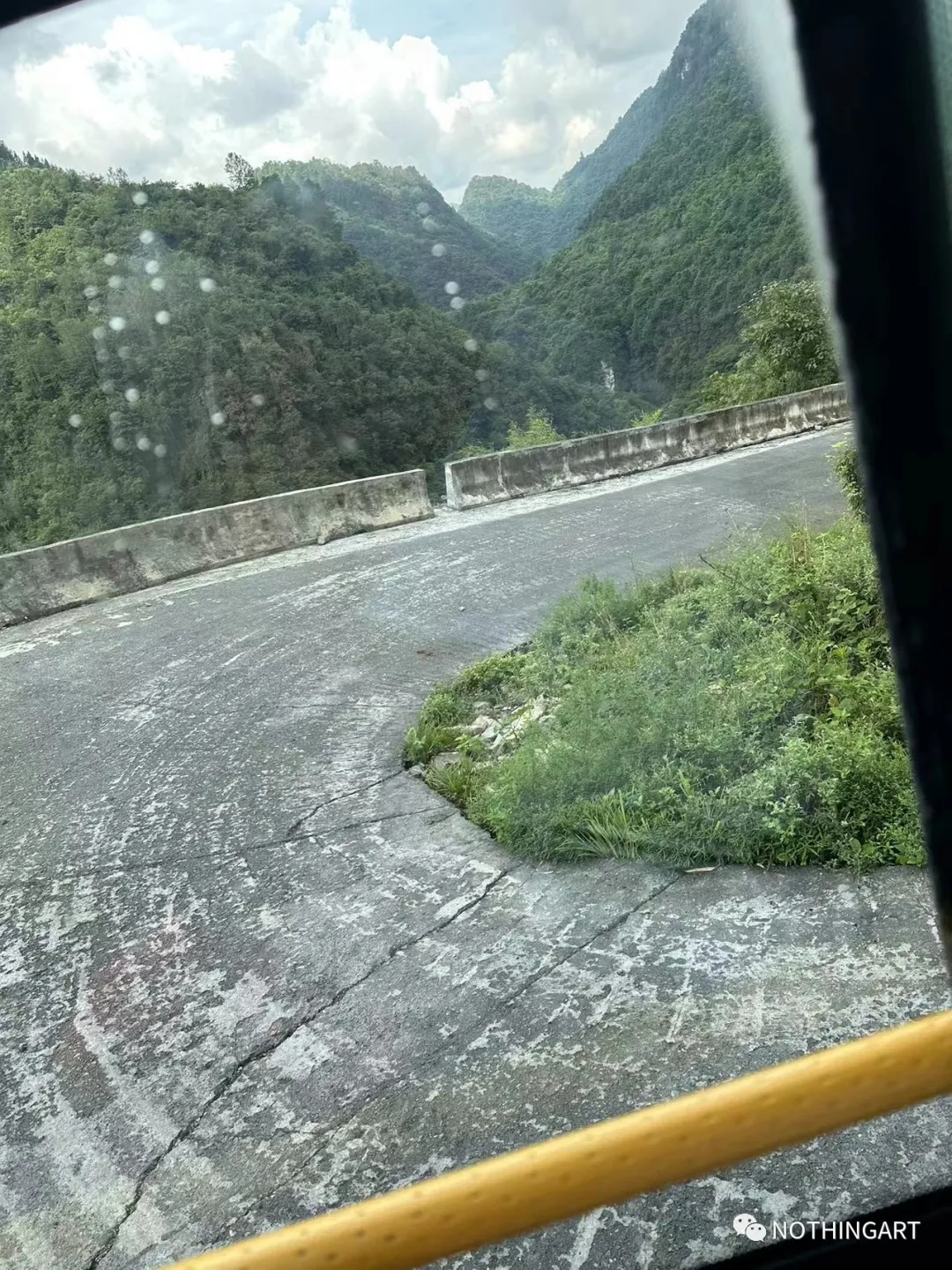
270-degree hairpin bends
When meeting oncoming traffic, especially large vehicles like cement mixers or herds of goats running about, it can get tricky…
It’s no wonder that Driver Tian says only experienced local drivers dare to drive this route.
As we go further, the signs of human habitation become fewer and the vegetation becomes denser. After a bumpy ride, but without incident, we reach Liang Deng Village, deep in the mountains, a place so remote even eagles struggle to fly over.
Mud walls, tile roofs, and steep stone steps lead to the courtyard where we will be staying. An elderly neighbor leans over her low, self-built wall, curiously watching us, these “visitors from afar.” Beside her, wild flowers grow freely along the broken wall, blooming vibrantly just like the sun overhead.
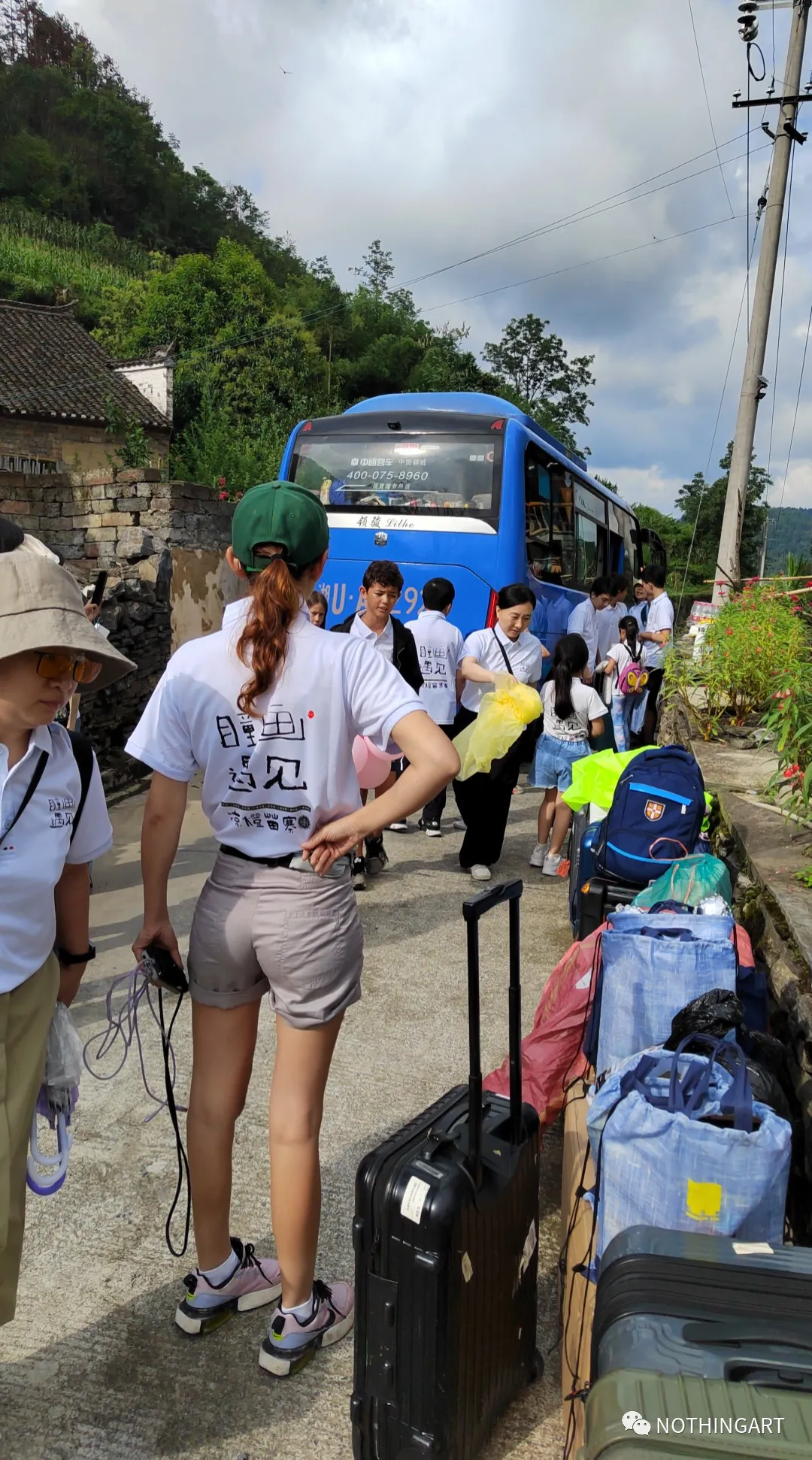
Volunteers unload luggage and supplies upon arrival in Liang Deng Village.
At four in the afternoon, the volunteers arrive at Wu Guozhuang’s home, dragging suitcases and supplies.
In the dimly lit room, an old cassette player leans against a gray-black wooden wall, and dusty buffalo horns hanging from the beams reveal the age of this century-old house.
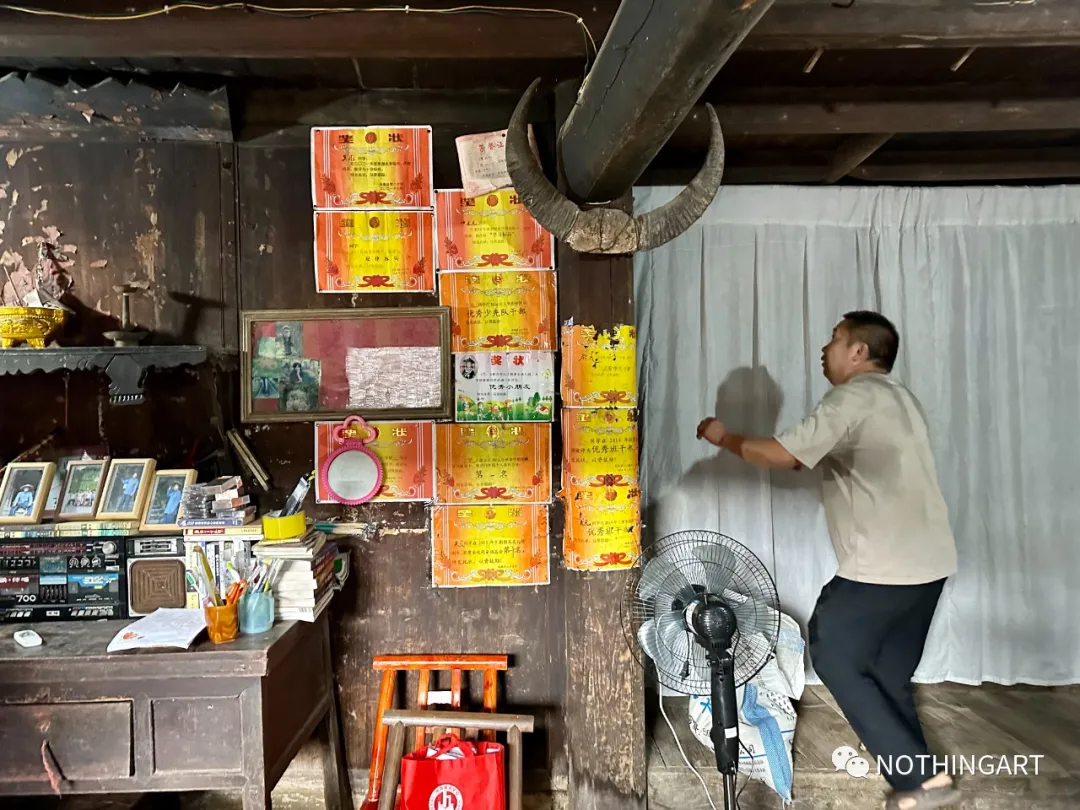
Wu Guozhuang helps turn on the lights and tidy up the storage room.
Our host, Wu Guozhuang, only has two beds in his house.
“How will 19 volunteers sleep?”
Extra space is cleared by cleaning out a small storeroom and the back passage.
The roof leaks when it rains;
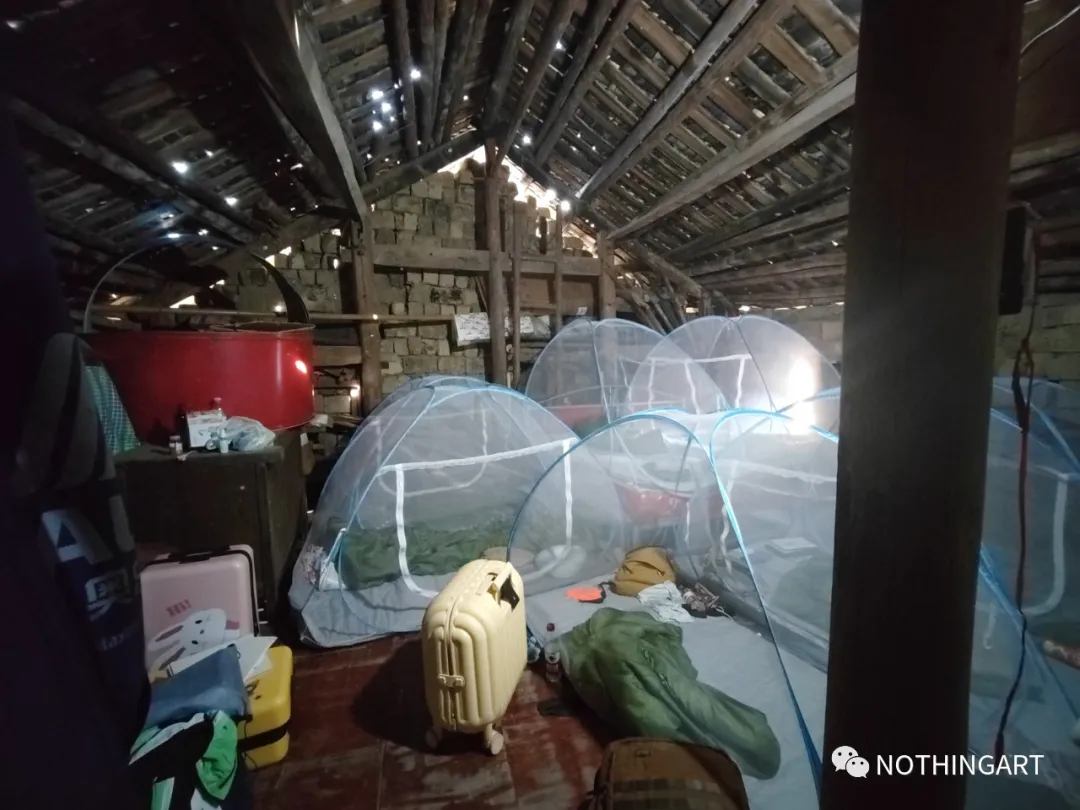
The main room has an uneven floor, which might cause backaches after a night’s sleep.
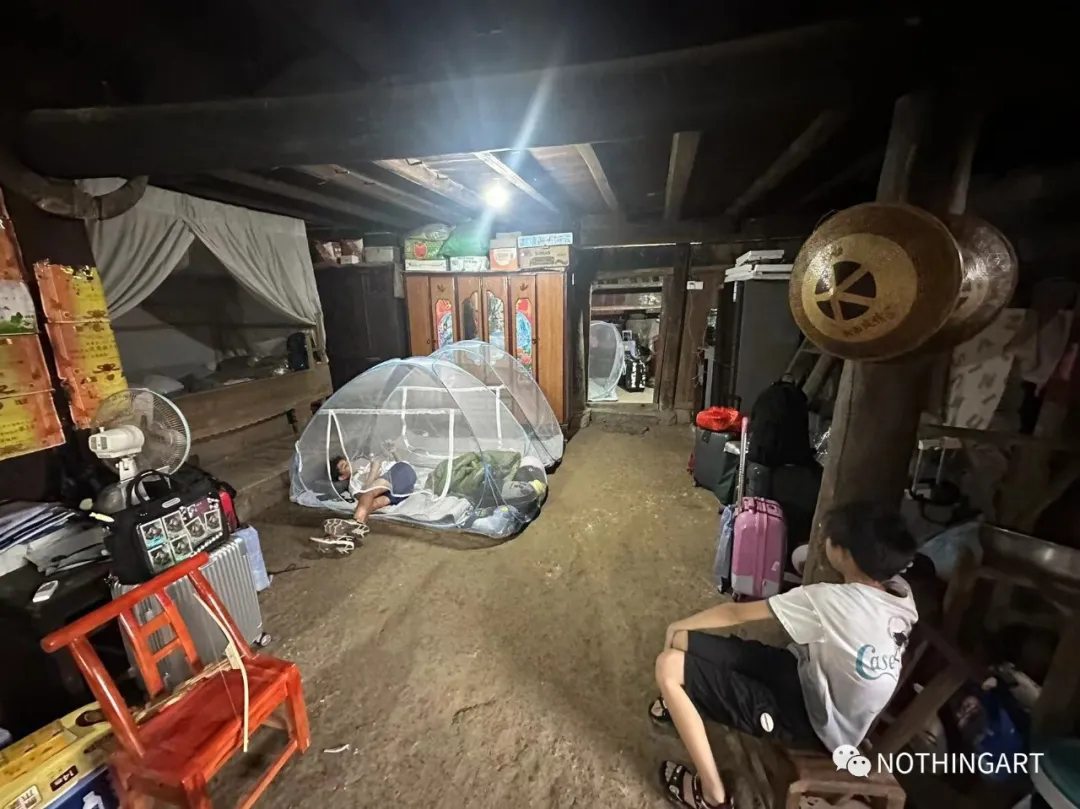
Even though we were prepared to sleep on the floor, the allocation of space is still a matter for discussion, involving issues of safety and privacy.
Teacher Li considers all options and ultimately arranges for the younger volunteers and female volunteers to stay in the best room, while male volunteers take up positions in the back passage, with Teacher Li and the staff “guarding the entrance.”
Volunteers allocate and organize their sleeping arrangements on the floor.
There is only one outdoor latrine, about ten meters away, which we must use due to our large number. We need to be quick when using the wooden suspended squat toilet.
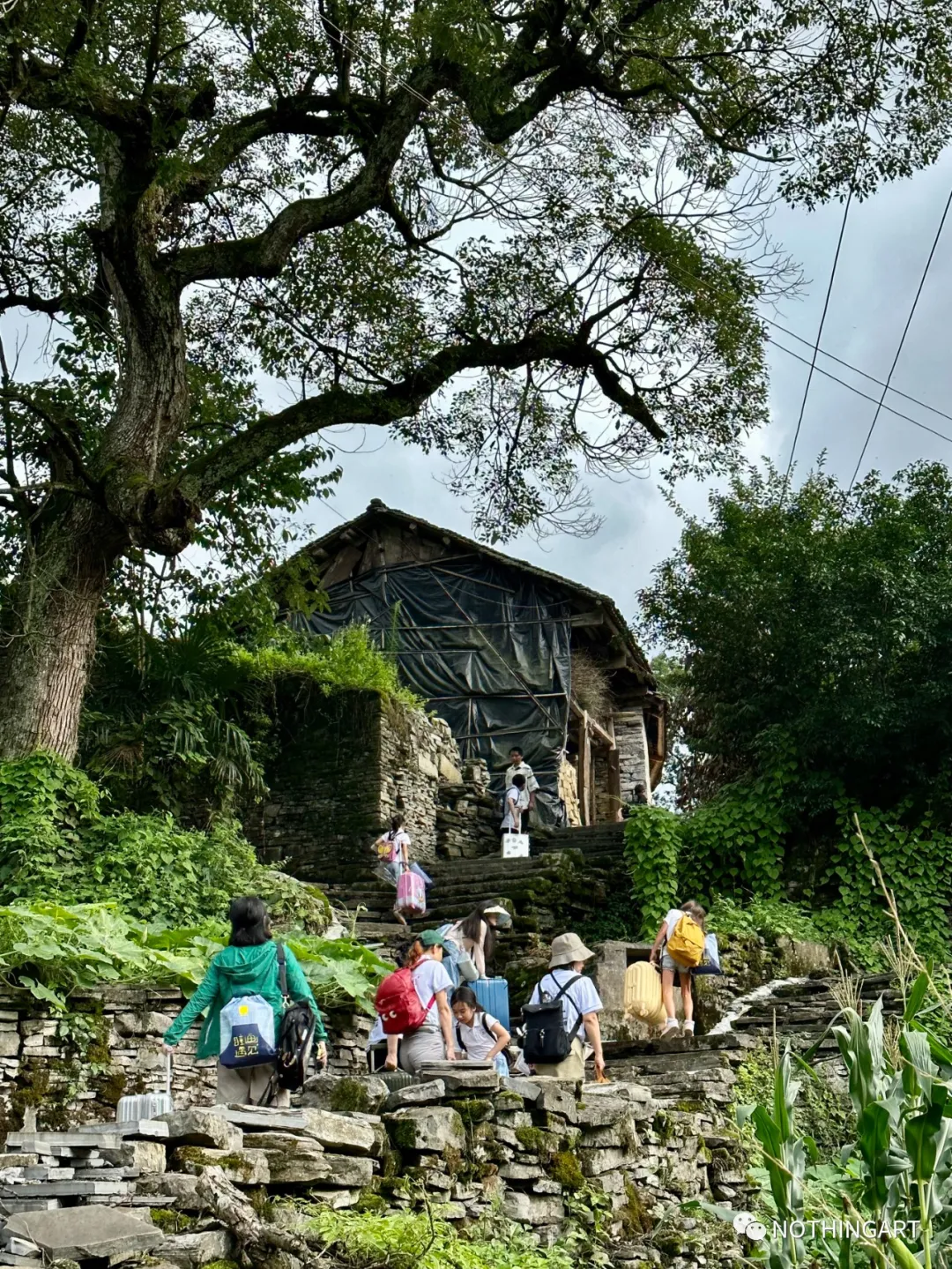
The latrine covered with black nylon fabric
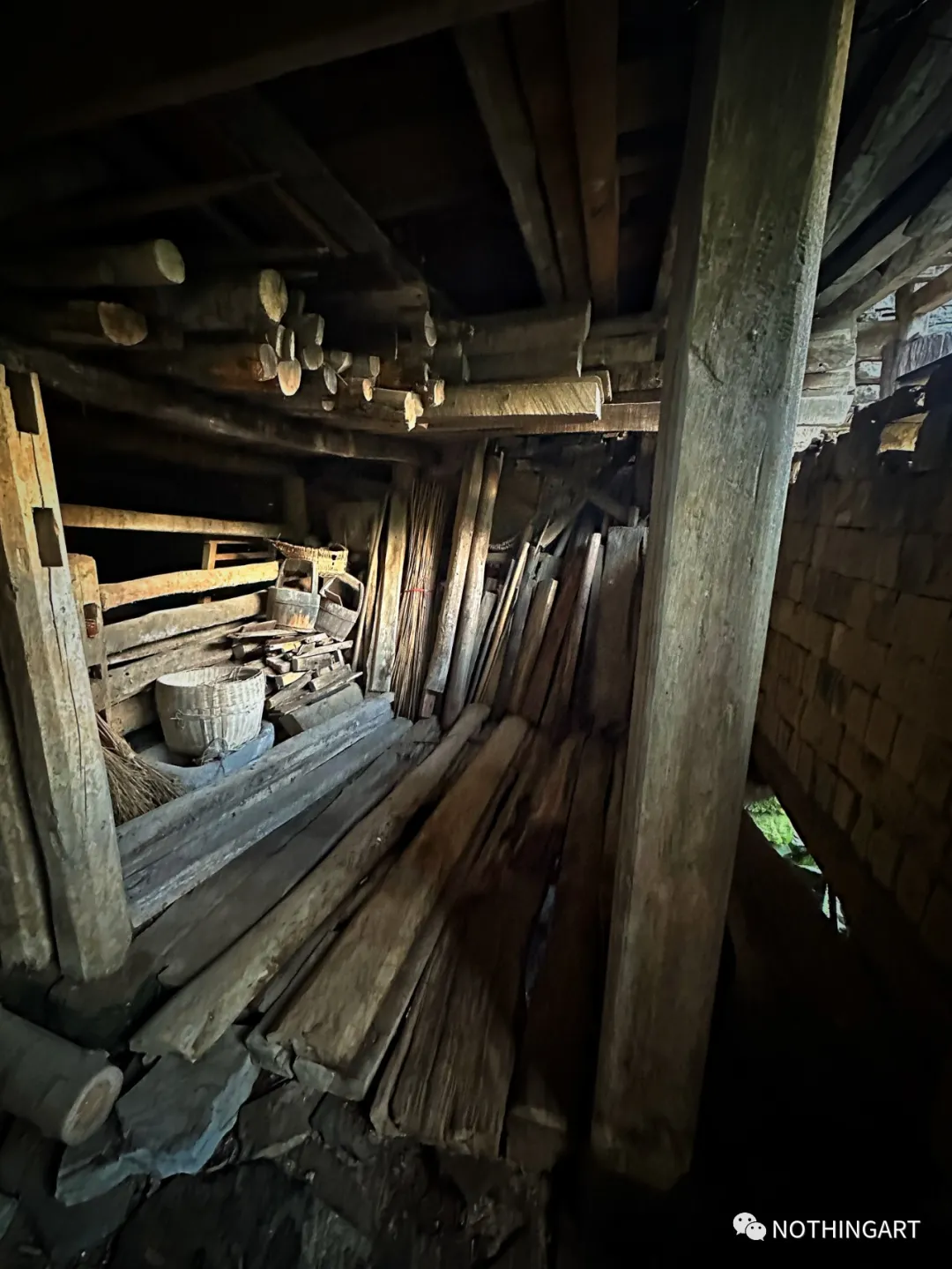
The interior of the latrine
The volunteers’ biggest concern, bathing, is put to rest when they see the single water tap outside the house. This is the most convenient water source in Liang Deng Village — the water pipes in Group One were installed through great effort by Wu Guozhuang, who managed donations and convinced each household to contribute 2,000 yuan. The other four groups do not have access to tap water.
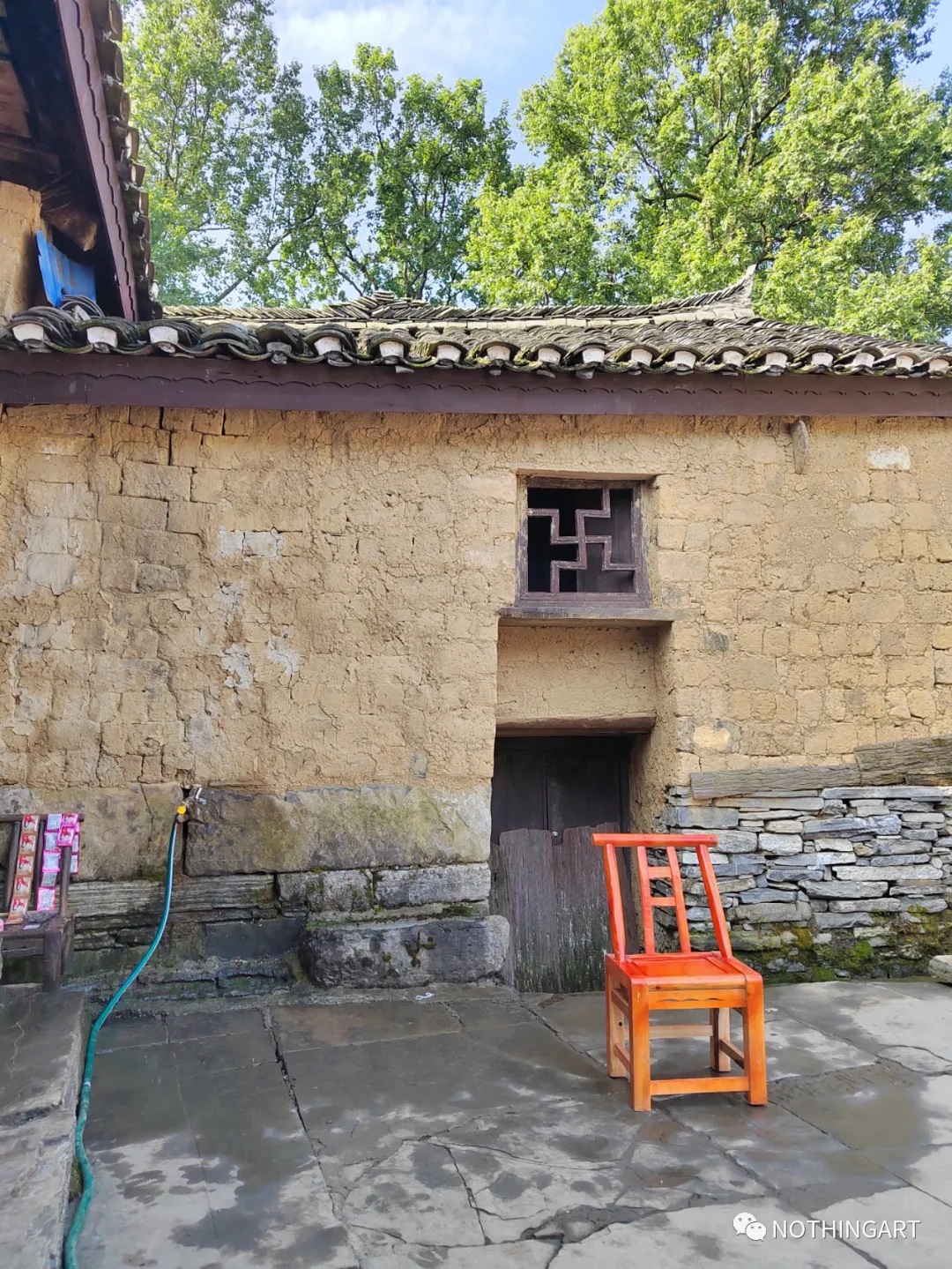
19 volunteers and the family of three from the Wu household share this single water tap
A monument commemorating the construction of a water reservoir
Cooking requires chopping wood and using a large clay stove, which poses some challenges for us.
Wu Guozhuang helps chop wood and cook dinner.
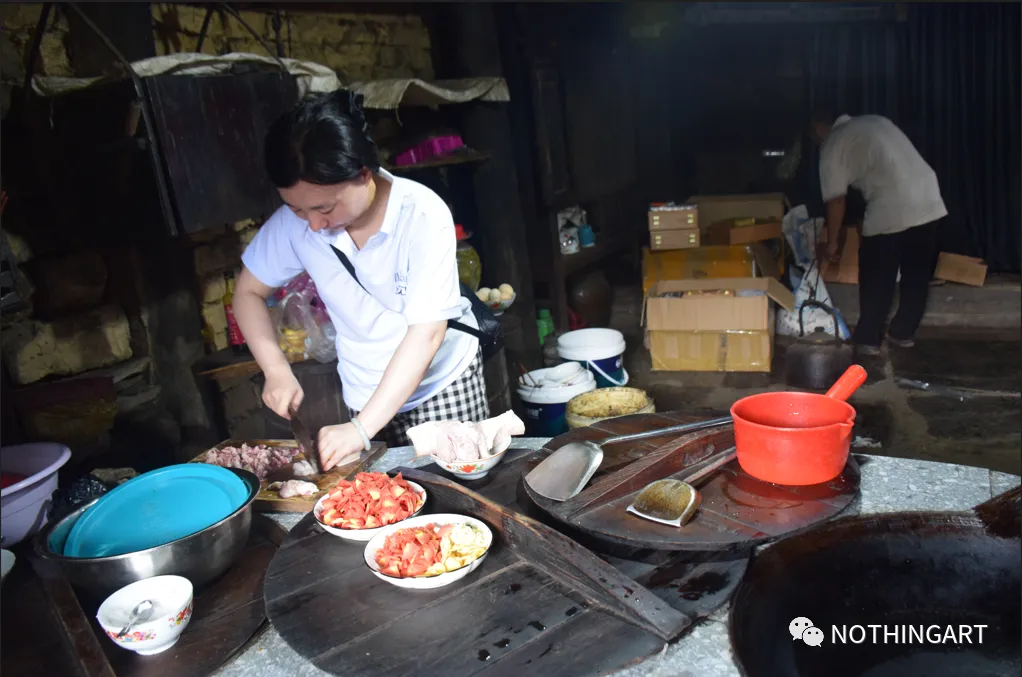
Teacher Wang helps prepare food.
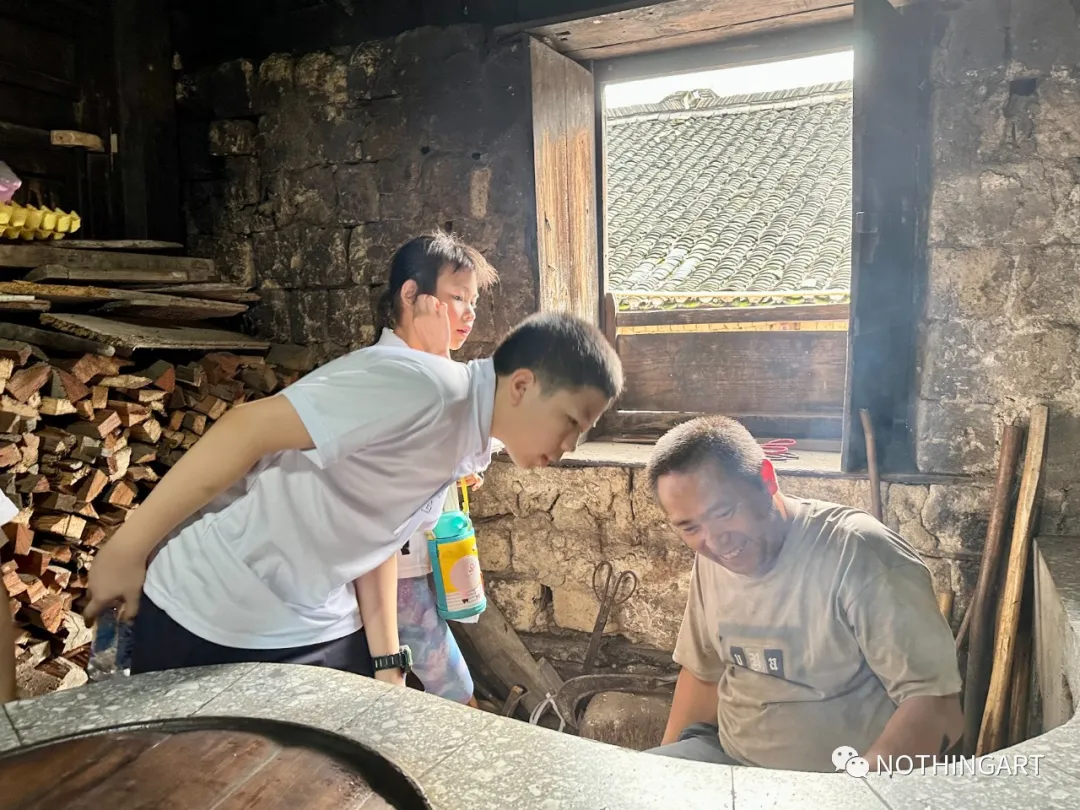
Young volunteers help stoke the fire.
We remove door panels to use as tables and stools as stands – this is said to be the highest form of hospitality among the Miao people. The chicken cooked in a large pot over a wood fire is incredibly fragrant, and the fish and shrimp caught from the village stream make for a very satisfying meal, likely the most sumptuous one we’ll have in the village.
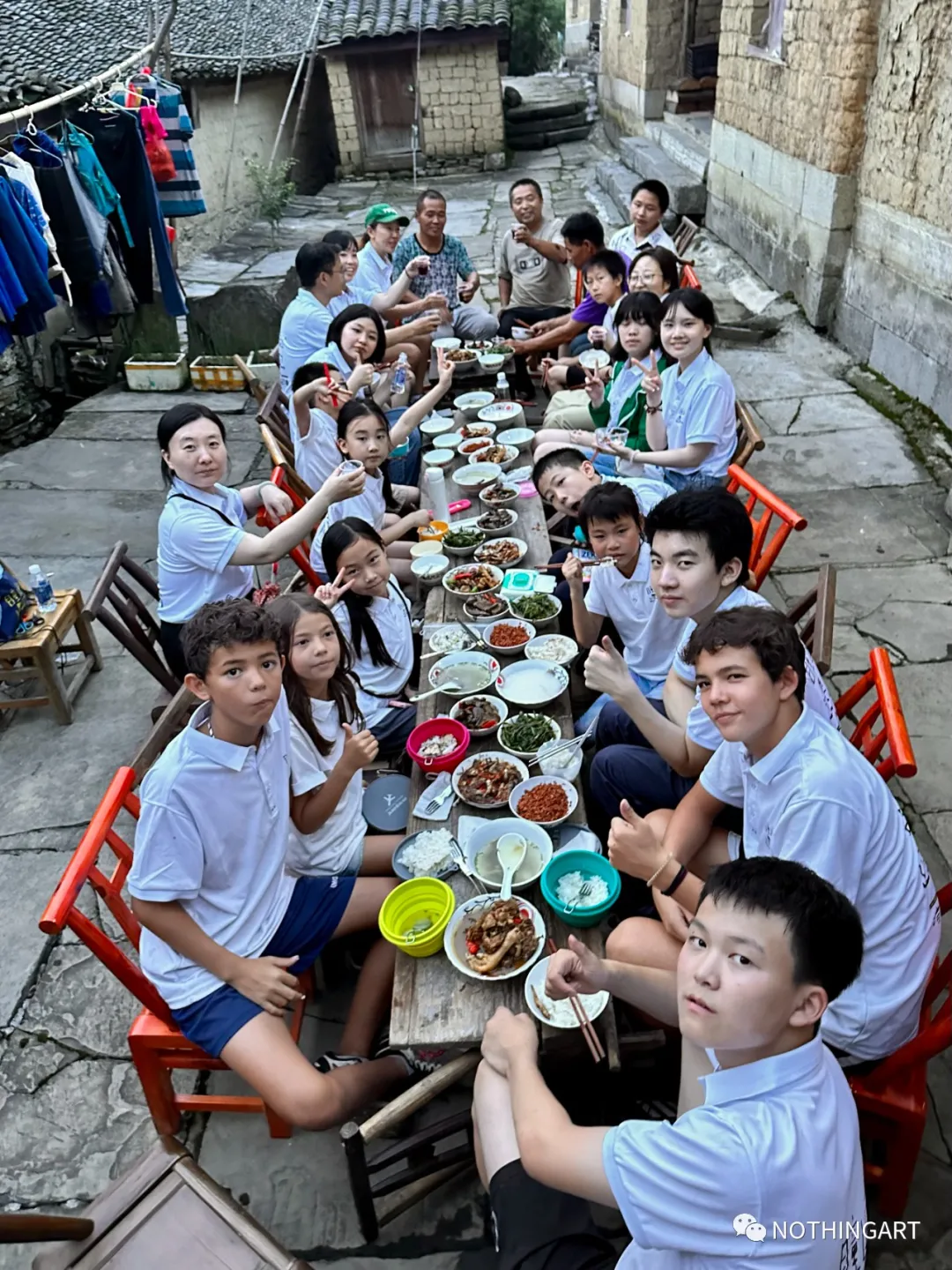
Welcome ceremony upon arrival – the long table banquet
During the long table banquet, the village head, party secretary, and Uncle Wu discuss the poverty situation in the village – difficult roads, water shortages, loss of young population, increasing numbers of left-behind children and elderly…
This is when we learn that the treacherous mountain road was built by the villagers themselves, carrying sweet potatoes as provisions and working together. The sharp turns we found illogical were created using dynamite. This also explains why these “illogicalities” exist.
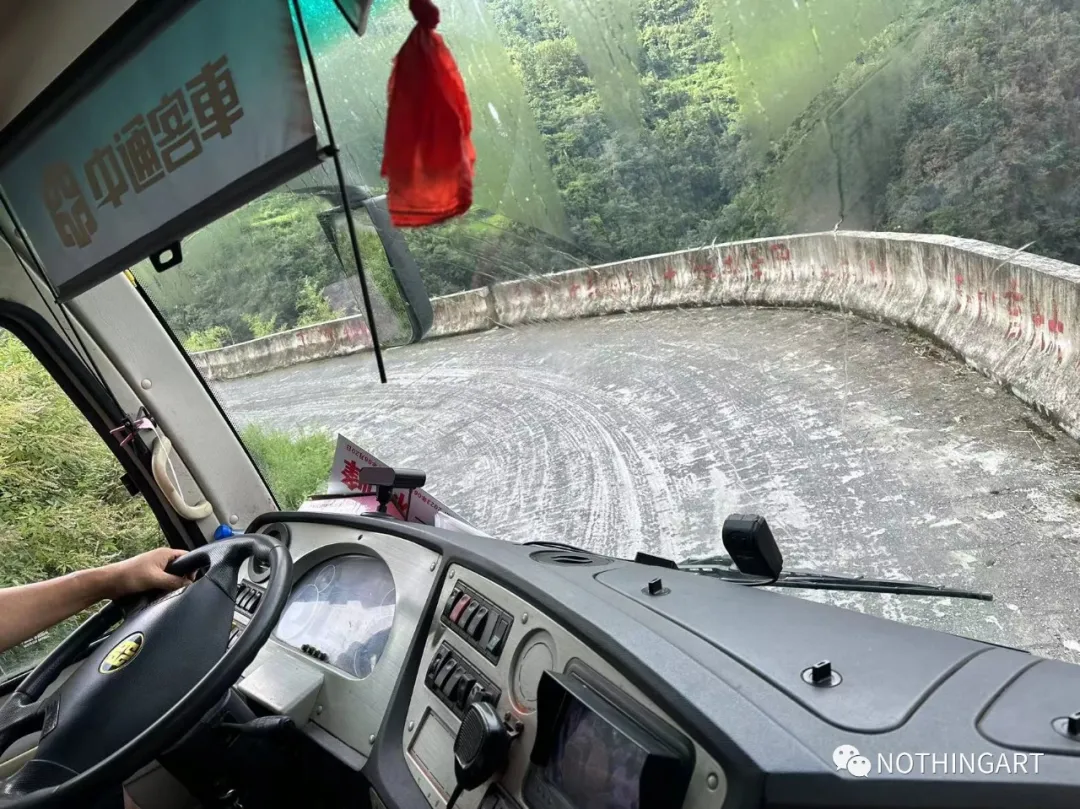
The current electrical wires were also installed by the villagers themselves, lifting heavy poles up the mountain and helping to string the lines, making electricity somewhat more accessible, “the poles were very heavy, now thinking about it, if someone had slipped, everyone would have been in danger.”
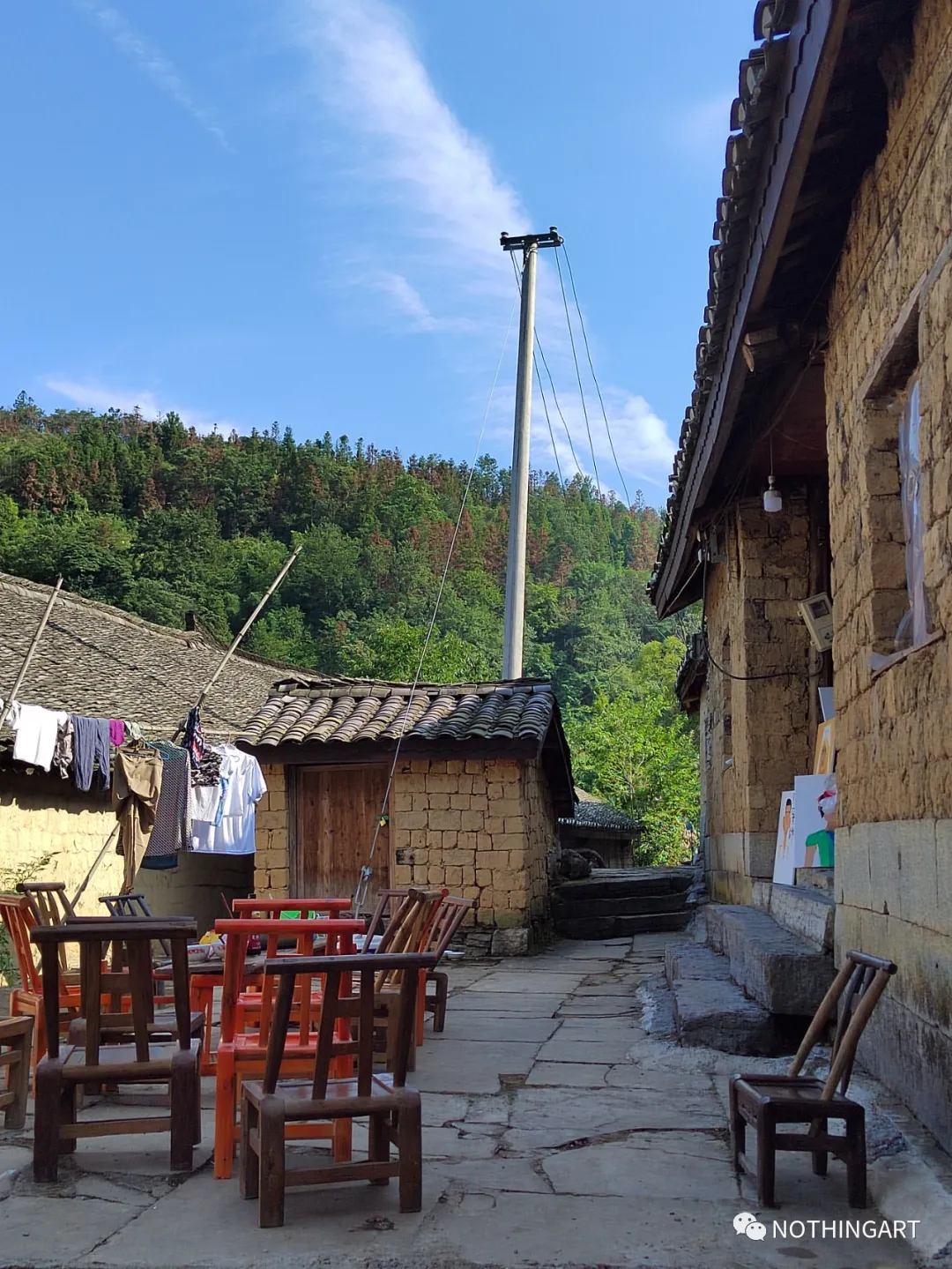
Before the “illogical” road was built – before 2006 – all supplies, such as fertilizers, seeds, and daily necessities, had to be carried up and down the mountainside.
Because the roads are so difficult, tourism development is hindered – tourists find it hard to come in;
Transporting goods out of the village is also challenging – large trucks cannot enter;
Now the village is listed as an ancient Miao village protected area, and houses cannot be demolished or rebuilt;
Preserving the houses while also improving them and finding a way forward for the village is not an easy task.
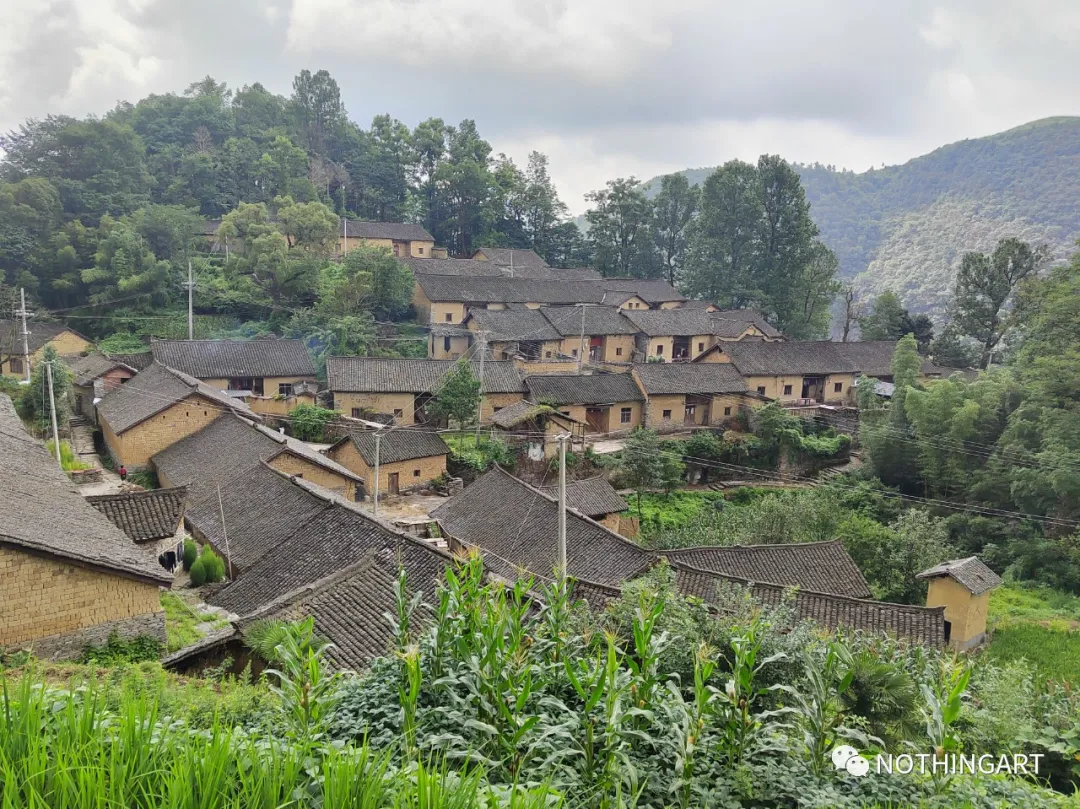
An overview of Liang Deng Village Group One taken from above
“Without discovery, without understanding, without listening, there is no way to change.”
Wu Guozhuang, who has been supporting us enthusiastically since the beginning of our preparations, is an ordinary person in our eyes. He works in Zhejiang digging trees and returns to the village during the summer to be with his children. He has always tried his best to help the village and promote it, hoping that Liang Deng Village can be seen by more people and that his hometown can improve.
The children participating in our “Pupil Art Encounter® Liang Deng Miao Village” program are from Group Two in Liang Deng Village. Groups Three, Four, and Five are too far away, making travel to and from school inconvenient. (To traverse all five groups of Liang Deng Village takes an entire day.)
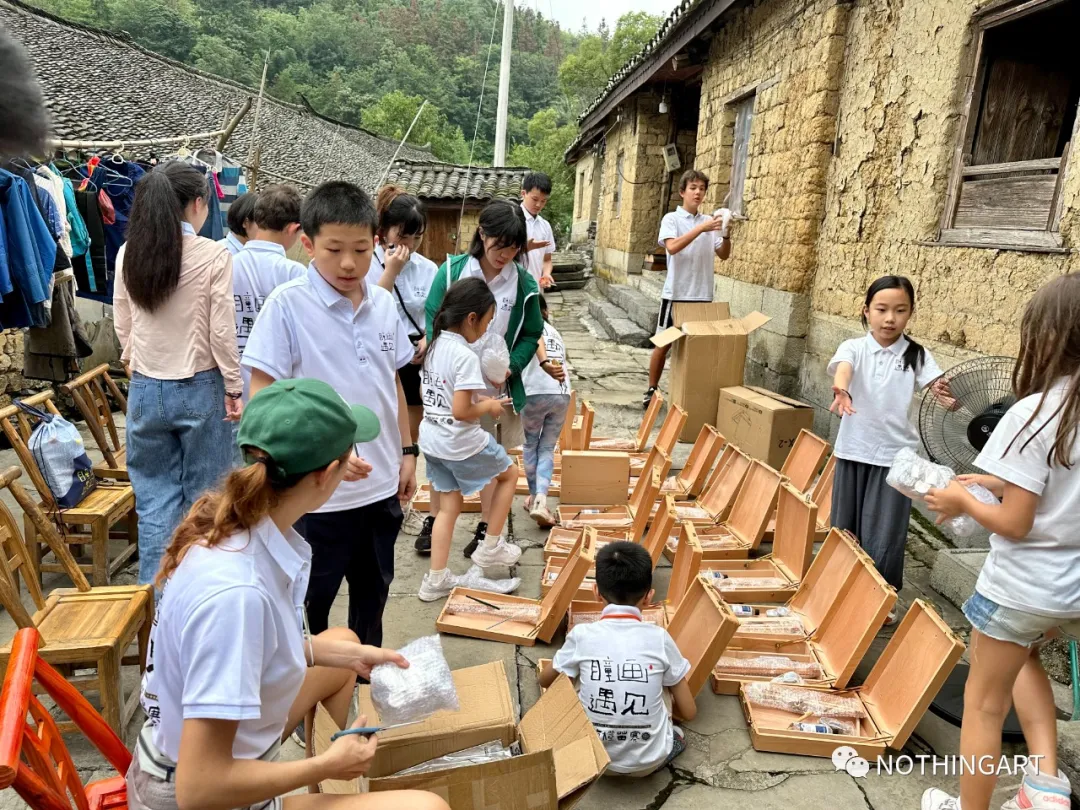
Volunteers distribute art supplies and materials to the village children.
What will happen tomorrow?
Let’s pray it doesn’t rain tonight.









